Doctor Nguyen Hoang Duc, Head of the Department of Urology - Center for Urology - Nephrology, Tam Anh General Hospital, Ho Chi Minh City, said that the 90-minute laparoscopic surgery to remove adrenal gland tumor was successful. After one day of surgery, the health of Mr. Nguyen Chinh (44 years old, Thu Duc City) was stable, blood pressure returned to normal, he could walk and eat. After two days, Mr. Chinh was discharged from the hospital.
Previously, the patient had been experiencing high blood pressure (160/90 mmHG) for a long time. Although he continued to take blood pressure medication every day, his high blood pressure did not improve. In addition, he also had symptoms of muscle weakness, difficulty walking, occasional chest pain, and shortness of breath due to potassium deficiency, requiring frequent hospitalization for potassium infusion.
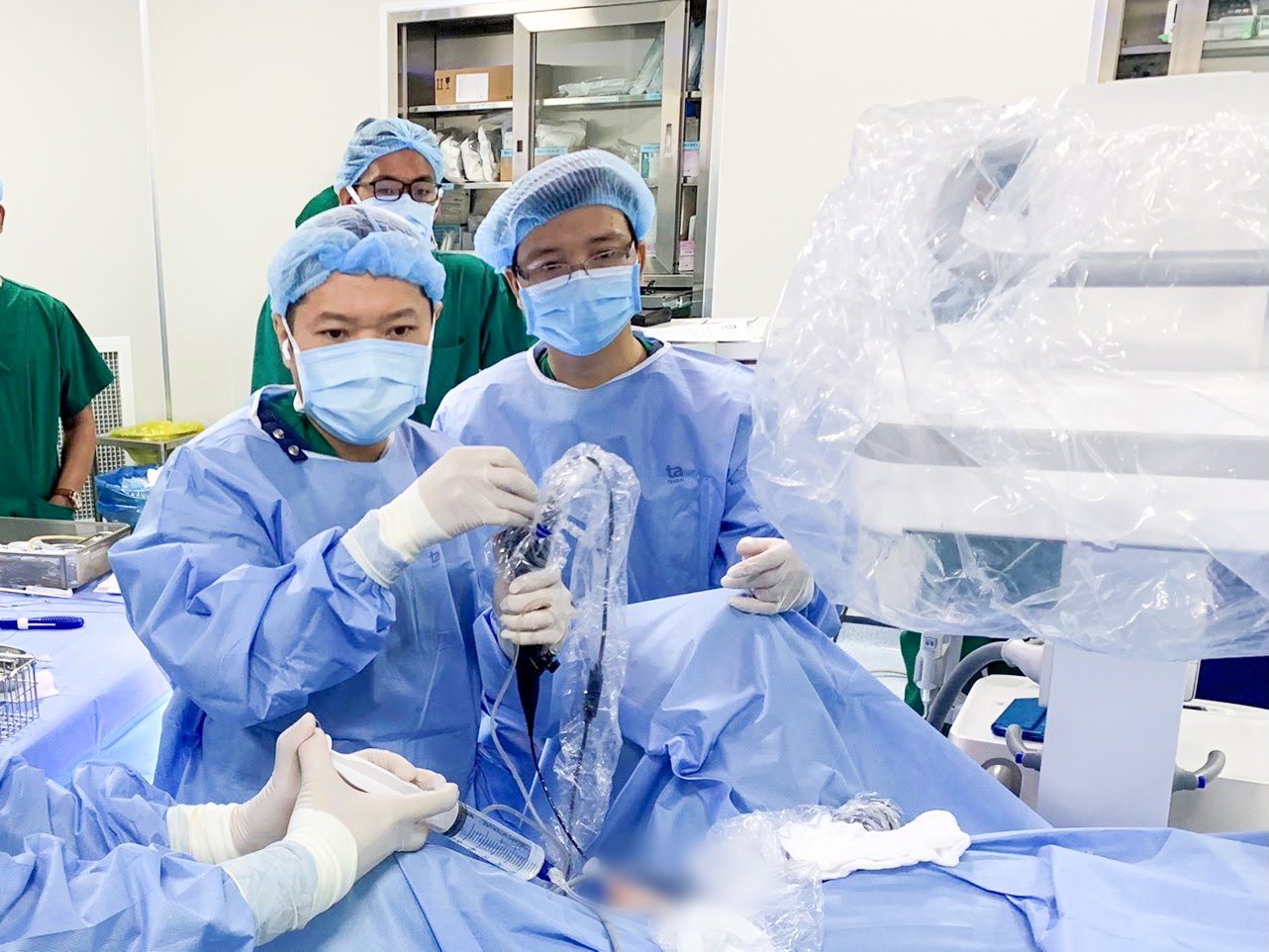
Doctor Nguyen Hoang Duc (left) during endoscopic surgery. Photo: Tam Anh General Hospital
“The condition of high blood pressure and potassium infusion has been going on for the past 2 years. Although I have visited many places and done many tests, I still have not found the exact cause,” said Mr. Chinh.
With experience in examining and recognizing suspicious signs in patients, Dr. Vo Tran Nguyen Duy, Department of Endocrinology - Diabetes, ordered the patient to perform paraclinical assessments including abdominal ultrasound. This technique is often used to examine the abdomen when there are signs of suspected cysts, tumors, abscesses, obstructions, fluid in the abdomen, etc. In addition, the patient is also ordered a CT scan (computed tomography), and blood tests to evaluate the endocrine index secreted by the adrenal glands.
The results showed that the patient had a small tumor measuring 25 mm in size in the right adrenal gland. Because the tumor was very small, it was difficult to detect, but this was the cause of the patient's uncontrolled high blood pressure and hypokalemia over the past time, Dr. Duy said.
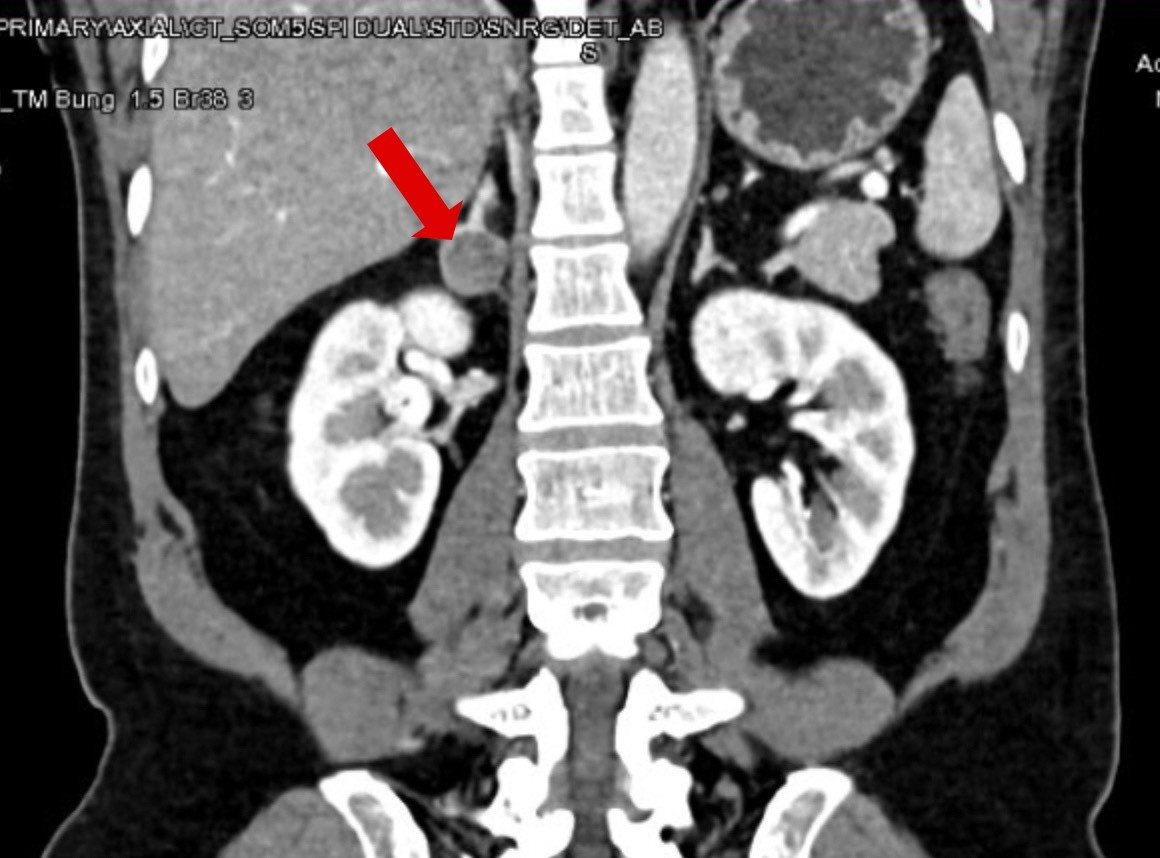
Tumors in the right adrenal gland cause high blood pressure and prolonged shortness of breath in patients. Photo: Provided by Tam Anh General Hospital
Immediately after that, an interdisciplinary consultation took place between doctors from the Department of Endocrinology and the Center for Nephrology and Urology, the doctors agreed on the surgical plan to remove the right adrenal gland and the tumor using 3D endoscopy. "Although the tumor is small in size, it causes great consequences to the patient's health," said Dr. Nguyen Hoang Duc, who directly performed the surgery on the patient.
The surgery was successful thanks to the 3D/4K ICG Rubina endoscopic surgery system with the most advanced imaging technology available today. The outstanding advantages of this method are minimal invasiveness, reduced bleeding, small wounds, few complications, less scarring, quick recovery, shortened hospital stay... for patients. In Vietnam, only a few hospitals are equipped with this system, Dr. Duc added.
The human body has two very small adrenal glands, only 4-5 grams, located above the kidneys. They have the role of secreting hormones to regulate the body's activities. However, when a tumor appears, there will be an abnormal increase in secretion, causing excess or deficiency of hormone components in the body.
Adrenal tumors occur in about 3-5% of the population. Although rare, they can occur in anyone, regardless of gender or age, and often increase in the elderly. The cause of the disease has not yet been specifically determined. However, factors such as environment, food or lifestyle habits... contribute to increasing the risk of the disease. Some cases of patients with genetic disorders, fibrosis, and multiple endocrine tumors also have higher risk factors.
In particular, adrenal tumors, although small, have a great impact on health, even threatening the patient's life if not treated promptly. High blood pressure that occurs frequently and cannot be controlled at some point will cause serious consequences such as stroke, hemiplegia, cerebral hemorrhage, and most seriously, disability. Along with that, low potassium will cause muscle weakness, weak legs, unsteady walking, and can also affect heart function, causing unpredictable consequences.
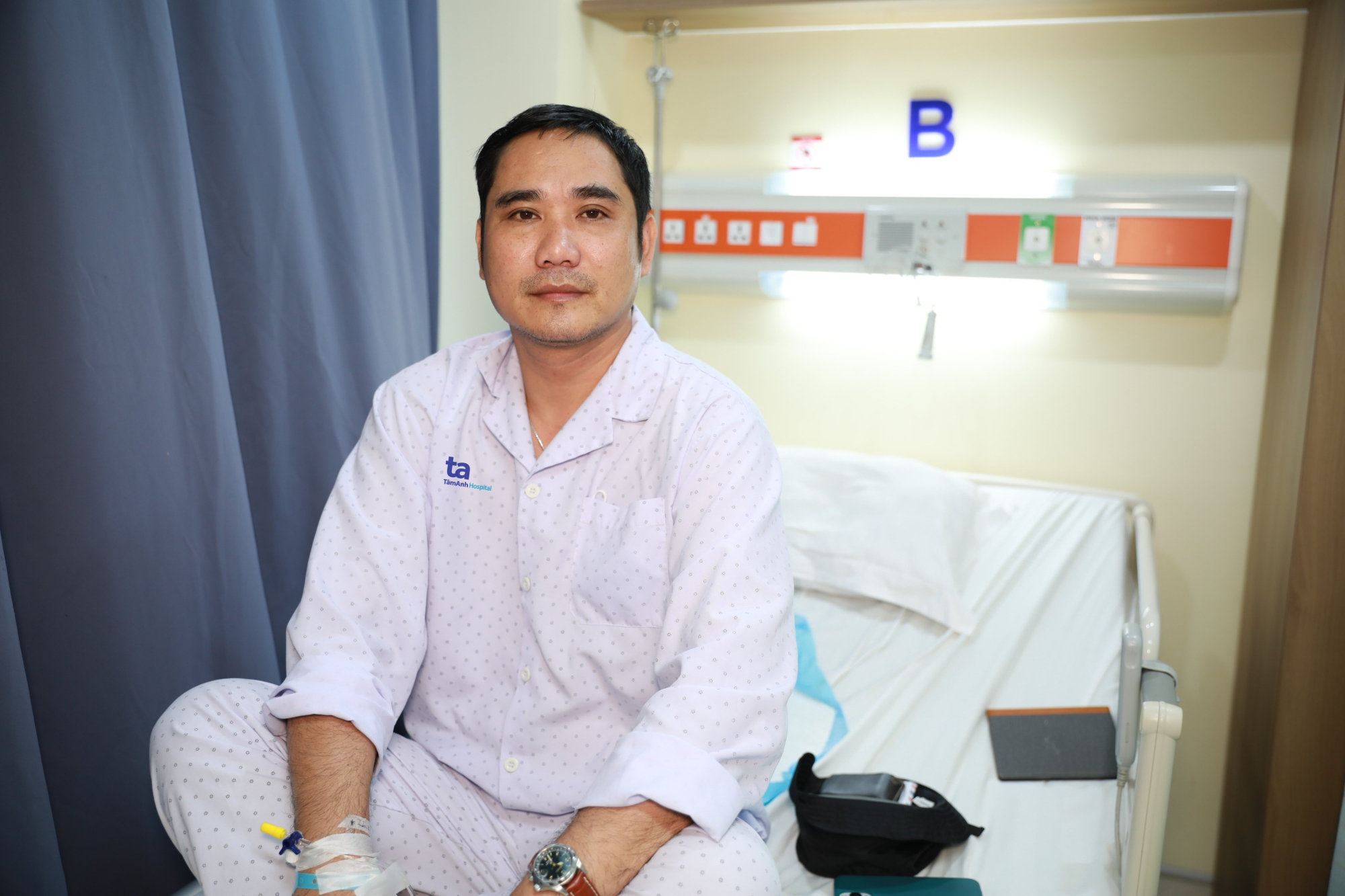
The patient's health is stable after surgery. Photo: Provided by Tam Anh General Hospital
Fortunately, 95% of adrenal tumors are benign, only 5% are malignant. Adrenal cancer can be primary cancer, or cancer that has metastasized from elsewhere, often detected late, with large tumors (5-7 cm). In the case of the patient, the tumor was only over 2 cm, most likely benign. To know exactly, after surgery, the doctor will perform a pathological anatomy, then there will be a suitable treatment plan.
Therefore, in addition to regular health check-ups, when there are symptoms of high blood pressure that cannot be controlled by medication, especially in young people under 50 years old, accompanied by symptoms of fatigue, muscle weakness, heart rhythm disturbances, weight loss, it is necessary to go to a reputable medical facility or hospital for examination and testing as soon as possible, Dr. Hoang Duc emphasized.
Quyen Phan
Source

























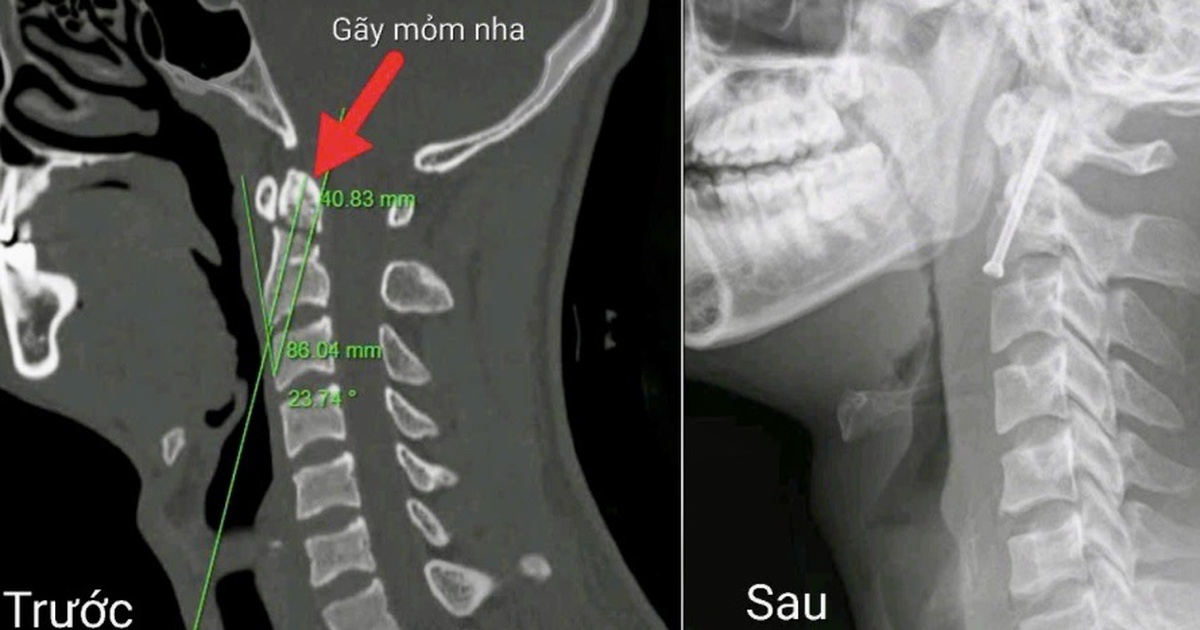







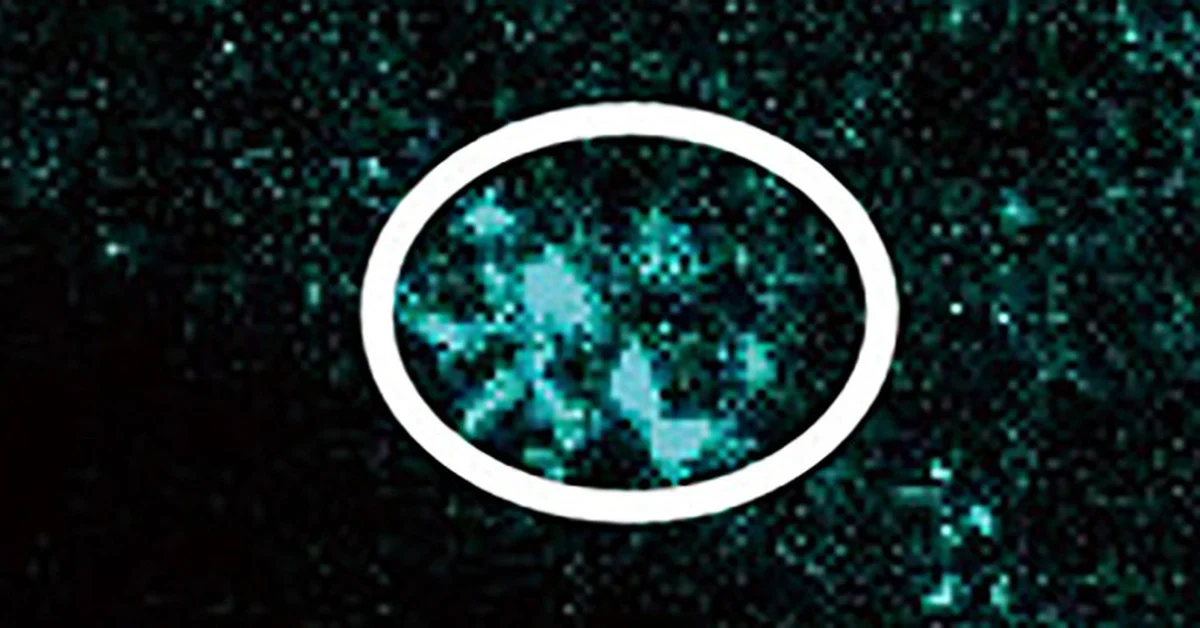

























Comment (0)